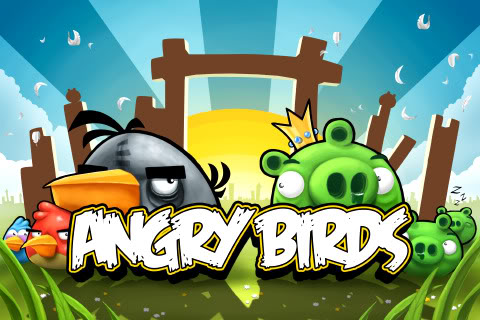GamesBeat: What do you find about the success rate or failure rate among the indies? We always hear about folks like the Temple Run guys who create something really successful, but it’s hard to get a grip on how much activity there is out there. Sometimes I think there are way too many game startups. Half the attendees at GDC now identify as indies.
Rosendahl: That’s the good side and the bad side. Anyone can do it, so everyone is doing it, so you have a very crowded field. Some wonderful, unique stuff will come out of that. Eventually it will have to stabilize. It’s the Wild West right now. It’s a rebirth of the game industry.
You had a game industry that was mature before digital distribution. Everyone understood how it worked. A few large companies were responsible for publishing and distribution and much of the game creation. That all changed, almost overnight. Now it’s changing again with all the indie studios. That will eventually settle at some point. I have no idea what it will be like then.
I do think that there will be a lot of change in the way that we play games. There will be the sit-at-home-with-a-big-screen experience. There will be the mobile experience, although mobile devices 10 years from now, who knows what they’re going to be? I think it’s all going to be wearable. That’s going to create new opportunities. My personal feeling is that all the stuff people are developing now is practicing and trying to figure out the creative abilities we’ll need in the next big shift.
GamesBeat: I don’t necessarily see a lot of examples of companies successfully adapting to this new world. Electronic Arts says a very large percentage of its revenue is digital now, but they’re treading water on profits and revenues are shrinking. It’s hard to find companies that are figuring it out.
Rosendahl: It’s a challenging environment, with all these changes. For all the — it sounds funny to say “traditional game companies,” because it’s all such a new industry — but this is a fundamental shift in their business. The fact that they’ve survived at all is pretty good.
GamesBeat: You’ve been in film and gaming both. Which seems to have a more interesting future as far as startups are concerned?
Rosendahl: Gaming, for sure. I’m a pessimist about the future of the film industry. I think there will always be linear entertainment. We will always want to just sit back and have a story told to us. But the percentage of our entertainment time that takes up will be less and less. People love things that are new and different. Films are not that anymore. They can only get bigger and louder and more complex to be interesting to an audience. There’s a limit to how big and loud you can go.
There is very little innovation happening in linear media, from a technology standpoint. Even from a creative standpoint. It’s hard to tell a story or make a visual experience that hasn’t already been done. For interactive, it’s brand new. Even if you look at the 30 years, 35 years of the digital game industry, it’s still a baby. It’s still figuring everything out.
GamesBeat: Do you have to keep on servicing the fans of that experience first? Pocket God went on forever in the mobile space. Temple Run’s spinoffs haven’t finished coming out yet. I don’t know if you’ve addressed that in your schooling, but it seems to me to be the reason why it’s so hard to run a business. There are so many one-hit wonders.
Rosendahl: The innovation part of it is really hard. Even those guys, with the one that was a hit, they didn’t know it was going to be a hit. I forget the exact numbers, but the number of tries that Rovio had before they hit Angry Birds was enormous.
Rosendahl: Right. So kudos to those guys for their tenacity and being willing to try it out. I’m sure that for a lot of these guys, once you have that huge hit it’s harder to do that. “Let’s try 50 different things and find out which one hits. Now we have a brand. We don’t want our brand to suddenly be the one that made one hit game and then 50 others that failed, but that’s how we made the first one!” That would be really bad for your brand now. That’s a difficult challenge, unless somehow you’re communicating that to your audience out there.
GamesBeat: What are some of the interesting people that get brought into these training programs? Is there some kind of best-practices collection of people that can teach how to run a game company?
Rosendahl: We don’t teach them how to run a game company, though. We teach them how to work in creative teams well, whether it’s for games or anything else. My entrepreneurship class is about the startup life. We usually bring in one or two entrepreneurs who are in the depths of it right now. The format I like to use with them is, “Tell us about three things you did right and three things you did wrong.” Part of it, with the students, is going out and interviewing an entrepreneur or finding first-person accounts and looking for those same things.
It’s hard to find an entrepreneur who will publicly tell you three things they did wrong. Partially because maybe they haven’t done the introspection yet. Also, you never want to admit that. But that’s where the lessons are. When you do something right, you don’t know whether you were smart or lucky. When you do something wrong, you pretty much know you screwed up. Well, that’s not quite right. There are a lot of things you do wrong that you decide were wrong in retrospect. But at the time, you made the best choice based on the information you had. That’s fine. That’s worth doing, as long as you learn from it. If it’s going down the wrong path, you change directions.
What I like to do, when we bring in speakers, is to bring in people from my entrepreneurship class who are still early in that process. They tend to look a little frazzled. They’re willing to share all the difficulties. Fundraising is always an issue. Finding the right customer fit and getting your product tuned so it works for a broad audience. Generally, whoever you made it for at the beginning isn’t necessarily the broad audience that you need to be successful. How do you change your product without losing your core audience or completely alienating your core audience? That’s assuming you found something with an audience in the first place, which is an anomaly for a lot of startups.
GamesBeat: Kickstarter feedback is interesting in that you’re getting real feedback before you do it. But you can also easily become a slave to responding to impossible demands.
Rosendahl: Right. There’s a hidden expense in doing that – customer support, communications, it’s a whole big PR thing. But it’s fantastic that that option exists for people. There are great things that have come out of it. And again, how old is that phenomenon? A couple of years? It’s far from settled. I’m sure we’ll see more successes. We’ll see some huge failures that get people very upset. I don’t think there’s been a giant crash and burn yet, but there will be. How that settles and whether it settles—The size of Kickstarter campaigns is getting larger and larger. Where does that end? Is there a natural limit to how big those projects can be? If they start getting really big, does that mean the small ones can’t exist anymore. I don’t know. It’ll be amazing to see.
VentureBeat's mission is to be a digital town square for technical decision-makers to gain knowledge about transformative enterprise technology and transact. Learn More



